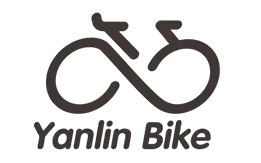
- Afrikaans
- Albanian
- Amharic
- Arabic
- Armenian
- Azerbaijani
- Basque
- Belarusian
- Bengali
- Bosnian
- Bulgarian
- Catalan
- Cebuano
- Corsican
- Croatian
- Czech
- Danish
- Dutch
- English
- Esperanto
- Estonian
- Finnish
- French
- Frisian
- Galician
- Georgian
- German
- Greek
- Gujarati
- Haitian Creole
- hausa
- hawaiian
- Hebrew
- Hindi
- Miao
- Hungarian
- Icelandic
- igbo
- Indonesian
- irish
- Italian
- Japanese
- Javanese
- Kannada
- kazakh
- Khmer
- Rwandese
- Korean
- Kurdish
- Kyrgyz
- Lao
- Latin
- Latvian
- Lithuanian
- Luxembourgish
- Macedonian
- Malgashi
- Malay
- Malayalam
- Maltese
- Maori
- Marathi
- Mongolian
- Myanmar
- Nepali
- Norwegian
- Norwegian
- Occitan
- Pashto
- Persian
- Polish
- Portuguese
- Punjabi
- Romanian
- Russian
- Samoan
- Scottish Gaelic
- Serbian
- Sesotho
- Shona
- Sindhi
- Sinhala
- Slovak
- Slovenian
- Somali
- Spanish
- Sundanese
- Swahili
- Swedish
- Tagalog
- Tajik
- Tamil
- Tatar
- Telugu
- Thai
- Turkish
- Turkmen
- Ukrainian
- Urdu
- Uighur
- Uzbek
- Vietnamese
- Welsh
- Bantu
- Yiddish
- Yoruba
- Zulu
Nov . 30, 2024 22:45 Back to list
Exploring the Benefits of 20% More Efficiency with E-Bikes for Sustainable Travel
The Rise of the 20% E-Bike Revolutionizing Urban Transport
In recent years, the urban landscape has witnessed a significant transformation, largely driven by the rise of electric bicycles, commonly known as e-bikes. These innovative modes of transportation have become increasingly popular among city dwellers, offering a sustainable and efficient alternative to traditional commuting methods. At the forefront of this evolution is the notion of the 20% e-bike, which refers to e-bikes that can tackle steep terrains and empower riders with a significant performance boost, particularly in urban environments marked by hills and inclines.
The Rise of the 20% E-Bike Revolutionizing Urban Transport
Moreover, the environmental benefits of e-bikes cannot be overstated. With increasing concerns about air pollution and climate change, cities are looking for viable solutions to reduce carbon emissions. E-bikes offer a sustainable mode of transport that contributes to less traffic congestion and lower greenhouse gas emissions. A single e-bike can potentially replace short car trips, which are often the most polluting. By encouraging more people to choose e-bikes over cars, cities can move toward greener transportation systems that benefit both the environment and public health.
20 ebike

The increasing availability of e-bikes has spurred a dramatic shift in transportation habits. According to studies, e-bike ownership has surged, with millions of new riders embracing this form of transport. For those living in densely populated areas where parking is scarce and traffic is a daily headache, e-bikes provide an ideal solution. They enable faster commutes while avoiding the frustrations of gridlock, thereby revamping how people think about getting around the city.
One of the most exciting aspects of the 20% e-bike is its potential for inclusivity. Unlike traditional bicycles that may require a higher level of fitness or physical ability, e-bikes can accommodate a broader demographic. This includes older individuals, people with disabilities, and those who may otherwise be deterred from cycling due to physical constraints. By providing an easier and more accessible means of transport, e-bikes foster a more inclusive community, encouraging a diverse range of people to engage with cycling as a viable commuting option.
However, with the growth of e-bike popularity, challenges also emerge. Issues such as safety, infrastructure, and regulation come to the forefront. Many cities are unprepared for the influx of e-bikes and lack the appropriate bike lanes and parking facilities. Ensuring the safety of all road users—both cyclists and motorists—will require dedicated efforts to develop policies and infrastructure that accommodate this new mode of transportation.
In conclusion, the 20% e-bike is more than just a technological innovation; it symbolizes a cultural shift in our approach to urban mobility. By encouraging greater usage of e-bikes, cities can combat pollution, reduce traffic congestion, and promote healthy lifestyles. As we look ahead, the future of urban transport will likely see e-bikes becoming an integral part of the transportation ecosystem, collaboratively creating smarter, greener cities for all. Ultimately, embracing e-bikes is not simply about adopting a new form of transport; it’s about reimagining how we connect with our environment and each other.
-
The Ultimate Kids' Four-Wheeler Experience
NewsJul.09,2025
-
The Ultimate Guide to Mountain Bikes: Gear Up for Your Ride
NewsJul.09,2025
-
The New Age of Cycling: Electric Bikes for Every Rider
NewsJul.09,2025
-
The Best Kids Bicycles: Ride in Style and Safety
NewsJul.09,2025
-
The Best 3-Wheel Scooters for Kids: Fun, Safety, and Adventure
NewsJul.09,2025
-
Revolutionize Your Ride: Affordable Electric Bikes
NewsJul.09,2025
-
Finding the Perfect Mountain Bike for Every Rider
NewsJul.09,2025



